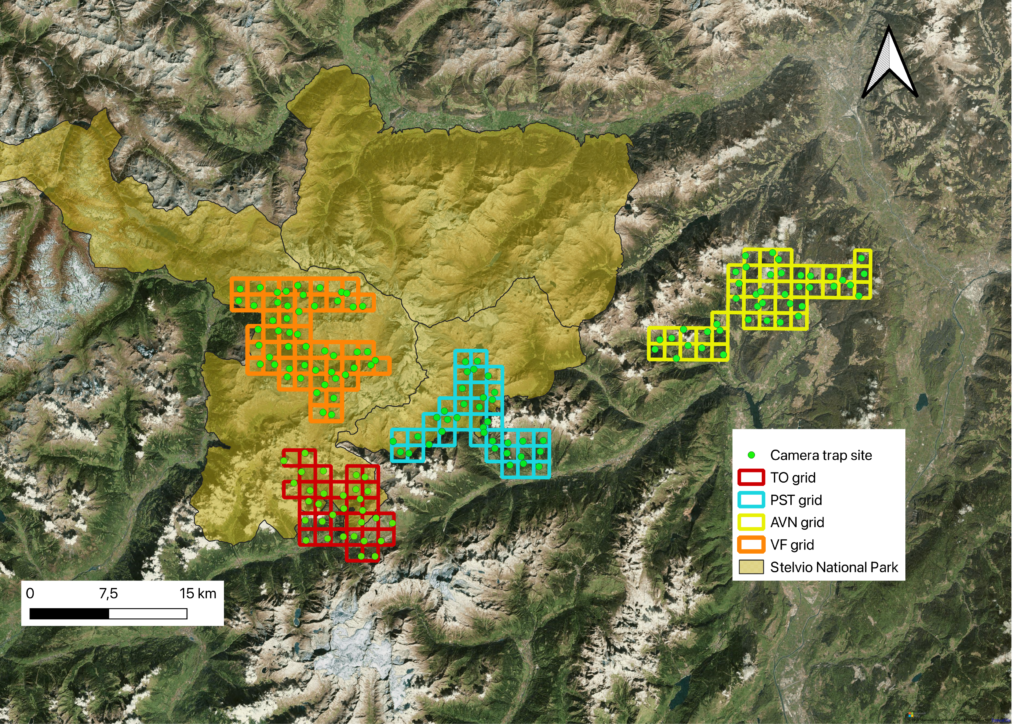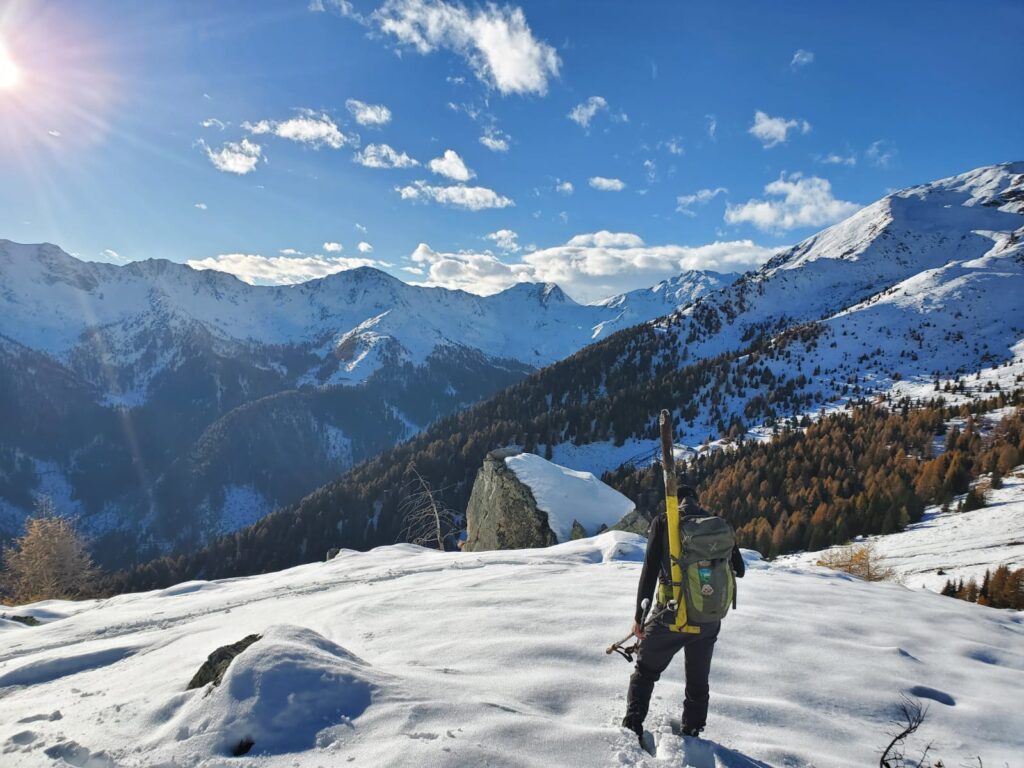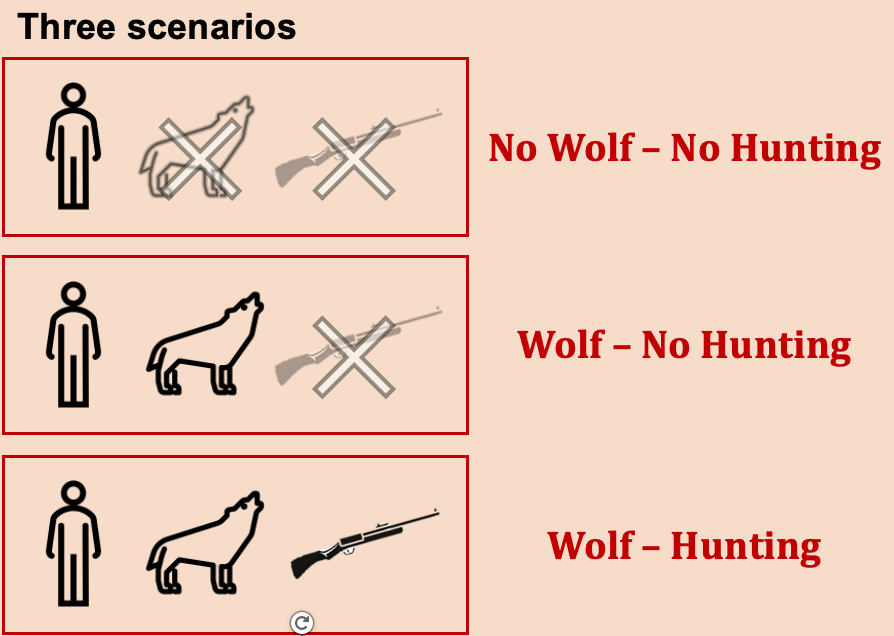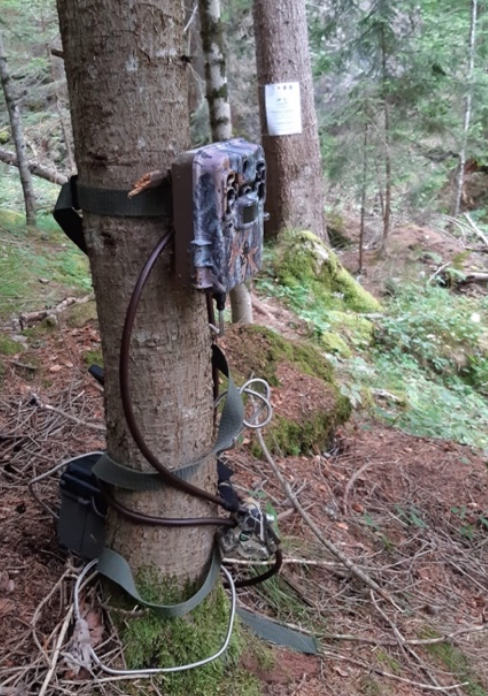Study area
The study was conducted in the Central-Eastern Alps, over four study areas and from May to November over 2022 and 2023. In total, the study areas cover 355 km2 and are located in Lombardy and Trentino-Alto Adige/Südtirol regions, partially including Stelvio National Park territory. Each area is separated in gridcell of 1.5 km2.
The four areas are:
- Alta Val di Non (AVN)
- Peio (PST)
- Valfurva (VF)
- Tonale (TO)

Definition of scenarios

The four areas were designed to cover three different scenarios: the first one is the “control” scenario were no wolves are known to be established and hunting is not allowed. In the second scenario, the wolf is present but there is no hunting season. Finally, the third scenario includes both hunting and predator pressures.

Data collection and processing
A camera trap was randomly placed in every gridcell to record the diel activity pattern of the ungulates and humans.
All images and videos were processed and analyzed through Timelapse (Greenberg, 2023) using a custom-made template including all the data fields necessary for the classification.
